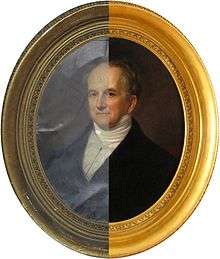Restoration (cultural heritage)


Restoration is a process that attempts to return cultural heritage to some previous state that the restorer imagines was the "original". This was commonly done in the past. However, in the late 20th century a separate concept of conservation-restoration was developed that is more concerned with preserving the work of art for the future, and less with making it look pristine. Restoration is controversial, since it often involves some irreversible change to the original material of the artwork with the goal of making it "look good." The attitude that has developed in recent years with the development of conservation is to attempt to make all restoration reversible.
Techniques
Art conservation can involve the cleaning and stabilization of art work. Ideally, any process used is reversible, departures from that ideal not being undertaken lightly. Cleaning is not a reversible process and can sometimes be controversial due to fears that cleaning would damage a piece, or on the grounds that damage or residue forms part of the history of a given piece and should not be modified. Michelangelo's statue of David has undergone two cleanings to remove dirt that had accumulated on the statue's surface.
Art restoration is vital to the survival of classical paintings and is part of the scientific application of chemistry. It often involves research to determine the original colors and materials of a work.
Watercolor on fresco
The use of watercolor paints to inpaint damages on fresco is an example of a technique utilized to achieve almost complete reversibility. This is the technique used in the 20 year restoration of Da Vinci's "The Last Supper" in Milan. One of the most popular inpainting techniques used today is the Tinted Varnish Treatment. This process is done once the piece is fully cleaned and varnished. This last step in the restoration process is to then go into spots where original paint may be missing, or where patched holes and other irregularities may lie. The restorer then goes in with tinted varnish over the top of the non-tinted varnish. This gives the illusion that the spots have been "re-painted", while in fact it is just a spot of tinted varnish. Most commonly "stippling" is used while using tinted varnish, in order for light to reflect similar to paint. This is done by using tiny dots in a row for variance.
Painting with light
In 2014, Harvard Art Museums exhibited murals by Mark Rothko from 1961 and 1962 which had faded due to their original display in a dining room. It restored the works to their original appearance by digitally projecting light carefully calibrated at each pixel from a photograph of the original colors, which made up the difference between the current and original appearance without damaging the material.[1][2]
History of art restoration
- An important event in the early history of art restoration is the restoration of the Sistine Chapel frescoes, beginning in 1565.
- In the United States, the first art restoration company was established in 1850 in New York City Oliver Brothers Fine Art Restoration[3]
- The world's first vacuum table for re-lining paintings was invented in 1920's. The patent was filed in 1937[4]
References
- ↑ "Harvard uses projection technology to shine new light on faded Rothko murals". 2014-06-03. Retrieved 2015-06-07.
- ↑ http://www.harvardartmuseums.org/about/press/mark-rothko%E2%80%99s-harvard-murals-feature-harvard-art-museums%E2%80%99-inaugural-special-exhibition
- ↑ New York Historical Society
- ↑ United States Patent Office, patent # 2,073,802 , March 16 1937